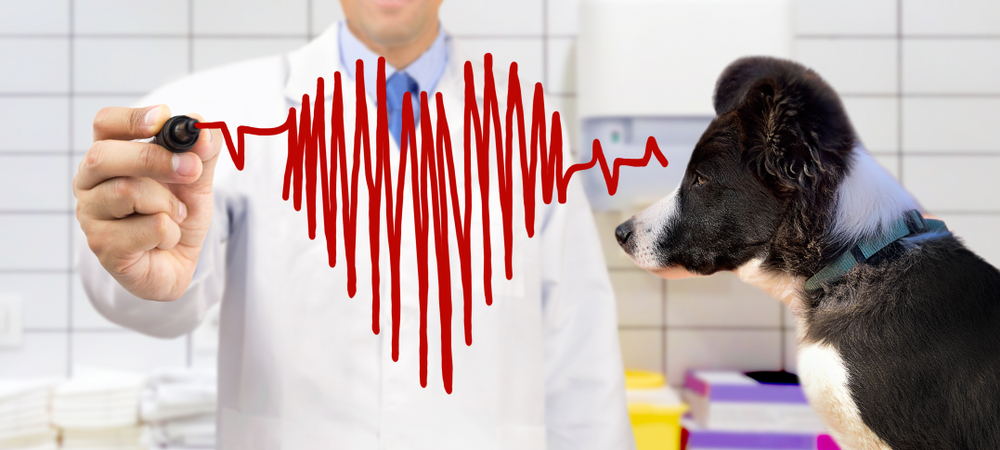Conditions Commonly Diagnosed Through CT Scans For Dogs}
Wiki Article
What You Required to Know Concerning Vet Providers: An Introduction of Diagnostic Equipments and Procedures
Vet solutions play a vital function in maintaining the wellness of pets. Regular check-ups can disclose concealed wellness problems early on. Numerous diagnostic tools and procedures, such as blood examinations and imaging techniques, supply important understandings right into an animal's well-being. Comprehending these techniques is essential for pet dog owners. What details diagnostic procedures are most frequently used, and exactly how can they influence a pet dog's treatment plan?Importance of Normal Vet Examinations
While numerous pet dog owners may ignore the value of routine vet examinations, these appointments are necessary for keeping an animal's total health and wellness. Regular visits to the vet allow for very early discovery of possible wellness issues before they rise into significant troubles. Regular examinations usually include vaccinations, which are essential for avoiding infectious conditions that could significantly influence a pet's wellness. In addition, these appointments provide an opportunity for veterinarians to evaluate the animal's weight, dental health, and overall condition, making certain that the pet dog is thriving. During these brows through, pet proprietors can also receive useful recommendations on diet regimen, workout, and precautionary care tailored to their particular animal's needs.Typical Analysis Procedures in Vet Medication
In veterinary medicine, accurate medical diagnosis is important for reliable treatment. Usual diagnostic procedures consist of blood testing methods, progressed imaging innovations, and urinalysis, each playing a considerable role in identifying wellness issues. Understanding these methods improves the capacity to give ideal take care of animal clients.Blood Testing Methods
Blood screening techniques serve as crucial analysis devices in veterinary medication, allowing veterinarians to analyze the health and wellness of animals properly. These methods include collecting blood examples to assess different elements, such as white and red blood cells, platelets, and biochemical markers. Usual tests consist of total blood matters (CBC), which examine total health and wellness and find infections, and biochemical panels, which assess body organ function and metabolic standing. Furthermore, serological tests can recognize specific illness through antibody discovery. Blood screening is minimally invasive and supplies important information that helps in detecting problems, keeping an eye on health condition, and reviewing reactions to therapies. On the whole, these methods play an essential role in making certain excellent look after animals and animals alike.Imaging Technologies Used
Diagnostic imaging innovations are crucial tools in veterinary medicine, matching blood testing methods by supplying aesthetic insights right into an animal's inner structures. Common imaging techniques include X-rays, which work for evaluating bone cracks and finding international objects, and ultrasound, which enables real-time visualization of soft tissues and organs. Magnetic vibration imaging (MRI) supplies comprehensive images of complex anatomical areas, particularly in neurological evaluations. Computed tomography (CT) offers cross-sectional pictures, enhancing diagnostic precision for numerous conditions. Each of these modern technologies aids veterinarians in identifying health problems, preparing therapies, and monitoring recuperation. By including imaging technologies, vet experts can better assess an animal's wellness and make informed decisions regarding their care.
Urinalysis and Diagnostics
Urinalysis serves as a crucial diagnostic tool in veterinary medication, offering beneficial insights right into a pet's overall health and aiding in the discovery of different conditions. This non-invasive procedure examines urine samples to analyze kidney feature, hydration condition, and metabolic disorders. Usual elements analyzed include certain gravity, pH levels, sugar, proteins, and the existence of blood or bacteria. Unusual findings can show concerns such as urinary system tract infections, diabetic issues mellitus, or kidney condition. To improve diagnostic precision, urinalysis is commonly executed combined with various other tests, such as blood job and imaging research studies. Early discovery via urinalysis can result in prompt treatments, enhancing the prognosis for several vet people. It is an essential facet of comprehensive veterinary treatment.Understanding Blood Examinations and Research Laboratory Analysis
Recognizing blood tests and laboratory evaluation is important in veterinary medicine as it aids in identifying various health and wellness conditions in pets. Various kinds of blood examinations give important details concerning an animal's internal state, while analyzing laboratory results calls for cautious factor to consider of countless variables. This section will check out the kinds of blood examinations available and the value of their results.Kinds Of Blood Examinations
Blood tests play a crucial function in vet medication, supplying essential insights into an animal's health and wellness status. Various types of blood tests are utilized, each offering various purposes. Complete blood counts (CBC) assess general health and wellness and identify problems such as anemia or infection. Biochemical accounts assess organ function by measuring enzymes and electrolytes, using understandings right into metabolic health and wellness. Serological tests identify specific antibodies or pathogens, assisting in the diagnosis of infections or autoimmune conditions. Blood inputting guarantees safe transfusions, while coagulation tests assess the blood's capacity to clot, crucial for operations. These examinations jointly boost medical diagnosis, therapy planning, and tracking of an animal's health and wellness, highlighting the value of thorough lab evaluation in vet care.
Interpreting Laboratory Results
A detailed analysis of laboratory outcomes is vital for accurate diagnosis and treatment in vet medication. Interpreting lab results needs an understanding of regular recommendation varieties and the importance of deviations. Blood tests can expose different health and wellness indicators, such as body organ feature, electrolyte balance, and the existence of infections. Vets need to take into consideration the entire medical picture, consisting of the animal's background, health examination findings, and any signs provided. Variants in results may occur from factors such as age, type, and underlying health and wellness problems. Consequently, laboratory results need to not be seen in seclusion however instead as component of an all-inclusive analysis strategy. Exact analysis enables tailored therapy strategies and better results for veterinary individuals.Imaging Techniques: X-rays, Ultrasounds, and Beyond
Imaging strategies are important devices in vet medication, supplying important insights into the wellness and wellness of animals. Among the most typically made use of techniques are X-rays and ultrasounds. X-rays are vital for visualizing bone frameworks, aiding vets recognize fractures, tumors, or international objects. This approach is non-invasive and quick, making it excellent for immediate situations.Ultrasounds, on the various other hand, make use of sound waves to create pictures of soft tissues and body organs. This technique is specifically helpful for examining the heart, abdominal area, and reproductive organs, allowing veterinarians to assess problems like fluid buildup or body organ abnormalities.Beyond X-rays and ultrasounds, progressed imaging strategies such as computed tomography (CT) and magnetic vibration imaging (MRI) are increasingly used in vet practice. These approaches supply comprehensive cross-sectional pictures, improving the accuracy of diagnoses and therapy plans. Ultrasound For Dogs. Overall, imaging methods play a vital role in making sure efficient vet careThe Role of Biopsies in Diagnosing Pet Dog Health Issues
Accuracy in identifying health problems in pet dogs frequently hinges on the use of biopsies, which provide conclusive info concerning tissue abnormalities. A biopsy includes the elimination of a tiny sample of cells for examination under a microscope, permitting vets to identify different problems, including infections, lumps, and inflammatory conditions. This diagnostic device is hop over to these guys vital for comparing malignant and benign growths, assisting therapy decisions, and assessing the severity of a condition.Biopsies can be performed using various strategies, such as needle aspiration, incisional biopsies, or excisional biopsies, relying on the area and kind of tissue included. The choice of technique may affect recuperation time and the quantity of tissue gathered. Inevitably, the info obtained from a biopsy can bring about targeted therapies, improving outcomes for pets facing serious wellness challenges. Vets stress the relevance of this treatment in attaining exact medical diagnoses and reliable treatment plans.Advanced Diagnostic Equipment: Endoscopy and CT Scans

Advanced diagnostic devices, such as endoscopy and CT scans, play a necessary function in modern vet medication, using non-invasive methods to imagine internal frameworks and identify numerous conditions in pet dogs. Endoscopy includes using an adaptable tube outfitted with a camera, allowing vets to examine the stomach tract and breathing system directly. This method can disclose problems such as growths, international bodies, or inflammation, allowing targeted therapy plans.CT scans, on the various other hand, utilize sophisticated imaging modern technology to create comprehensive cross-sectional photos of the body (Board Certified Veterinary Cardiologist). This technique is particularly useful for evaluating complicated frameworks like the mind, back, and joints. By giving high-resolution photos, CT scans assist veterinarians in identifying problems that might not appear with traditional radiography. Together, these sophisticated devices boost analysis precision, boost treatment outcomes, and ultimately add to much better overall family pet health and wellness administration

Analyzing Examination Results: What Family Pet Owners Ought To Know
Recognizing test outcomes can be a difficult task for pet dog owners, specifically after sophisticated treatments like endoscopy and CT scans have actually been carried out. Interpreting these results calls for a grasp of clinical terminology and a clear understanding of what the searchings for suggest regarding the animal's health and wellness. Vets frequently supply descriptions, however the complexity of the results can still cause confusion.Pet proprietors ought to proactively engage in discussions with their vets, asking inquiries to clarify any kind of uncertainties. It is necessary to understand irregular versus normal outcomes and the implications for the animal's therapy plan. Furthermore, recognizing that some results might require additional screening or tracking can assist proprietors stay educated concerning their pet's health journey. Ultimately, a joint strategy in between pet owners and veterinary specialists fosters better health end results and improves the overall care experience for pets.Often Asked Concerns
Exactly how Do I Choose the Right Vet Center for My Family pet?
Picking the appropriate vet clinic entails researching neighborhood alternatives, assessing credentials, checking out centers, and assessing staff communications (CT Scans For Animals). Focusing on suggestions from trusted resources can help ensure the ideal treatment and environment for a pet dog's wellness demandsWhat Should I Do if My Pet Declines to Go to the Veterinarian?
When a pet rejects to go to the veterinarian, it's suggested to remain tranquil, use treats or toys to attract them, and take into consideration arranging a home browse through if anxiety lingers. Perseverance and positive support are key.Exist Telehealth Options for Vet Providers?
Telehealth choices for vet services are progressively offered, enabling pet dog owners to talk to vets from another location. These solutions allow conversations regarding wellness issues, recommendations on small disorders, and follow-ups without requiring to see a clinic.
How Usually Should My Animal Have Dental Exams?
The regularity of oral examinations for pet dogs normally depends on their age and breed. Usually, vets suggest annual oral assessments, although some pet dogs may need even more frequent sees to preserve ideal oral wellness.
What Are the Expenses Linked With Veterinary Diagnostics?
The prices connected with vet diagnostics can vary extensively, usually varying from standard tests like blood job to advanced imaging techniques. Aspects influencing costs consist of the center's place, devices made use of, and details tests required for every pet dog. Vet solutions play an important role in preserving the wellness of pet dogs. While several pet proprietors might undervalue the relevance of normal vet examinations, these visits are crucial for maintaining a pet's general health and wellness. Furthermore, these consultations provide an Resources opportunity for vets to look at this website analyze the pet's weight, oral health, and overall condition, making sure that the pet dog is growing. Accuracy in diagnosing wellness concerns in pet dogs often hinges on the use of biopsies, which offer definitive information concerning tissue abnormalities. In addition, identifying that some outcomes may need further testing or surveillance can assist owners remain educated regarding their pet dog's health and wellness journey.Report this wiki page